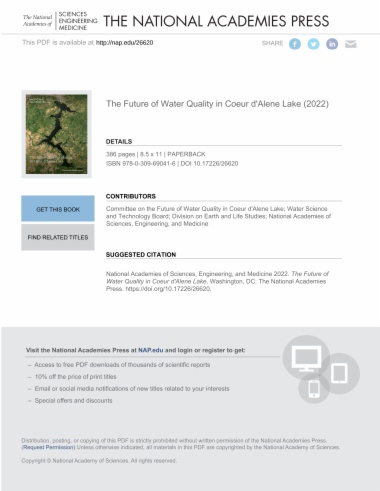

Coeur d'Alene Lake in northern Idaho is an invaluable natural, recreational, and economic resource for communities in Idaho and eastern Washington. Starting in the late 1880s, mining in the Lake's watershed sent heavy metals and other mining wastes into the Lake, resulting in contamination of lake sediments with lead, cadmium, arsenic, and zinc that persists today. The watershed was designated a Superfund site and cleanup has been ongoing for 30 years. However, the Lake's environmental quality and cleanup is overseen by a Lake Management Plan, originally implemented by the Coeur d'Alene Tribe and the state of Idaho. A major focus of that plan is whether lakeshore development might promote low-oxygen (anoxic) conditions that could release toxic metals from lake sediments back into the water column.
This report analyzes water quality data collected from the Lake and the watershed over the past 30 years. The analyses indicate that, although the Lake is still heavily contaminated, concentrations of metals in the major inputs to the Lake have declined, and there is no evidence that phosphorus concentrations have been increasing in the last decade or that low-oxygen events are becoming more common. However, the shorelines of the Lake, where exposure to metals or harmful algae is more likely, are not currently monitored. Protecting the water quality of Coeur d'Alene Lake will require that monitoring efforts be expanded to provide an early warning of deteriorating conditions, regular syntheses of data, and targeted studies—all coordinated among interest groups—followed by application of those results to managing the Lake.